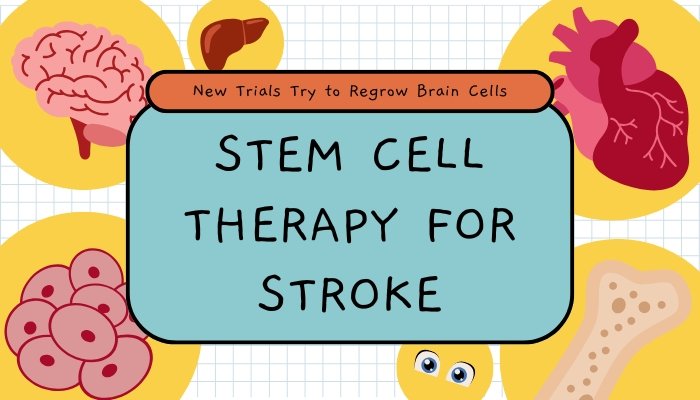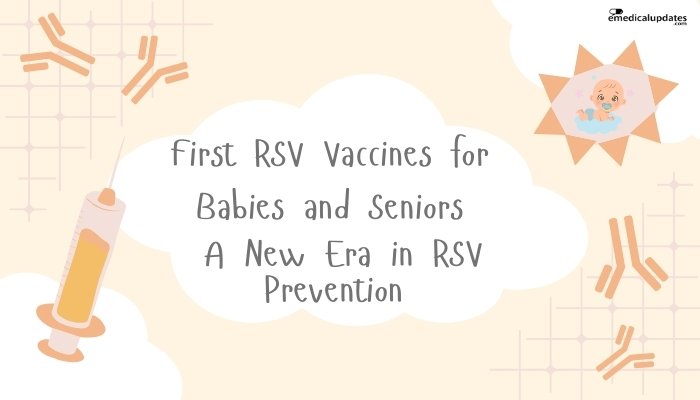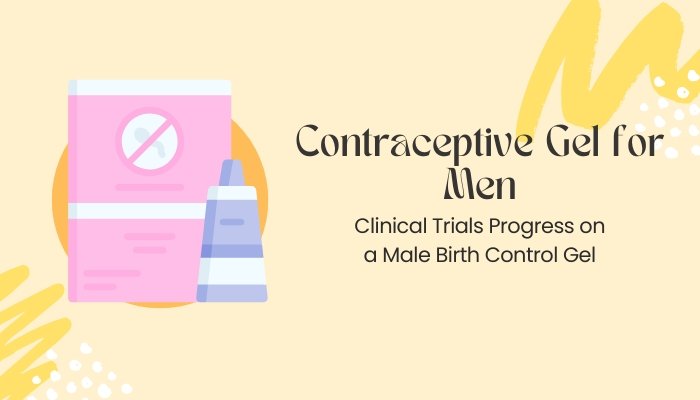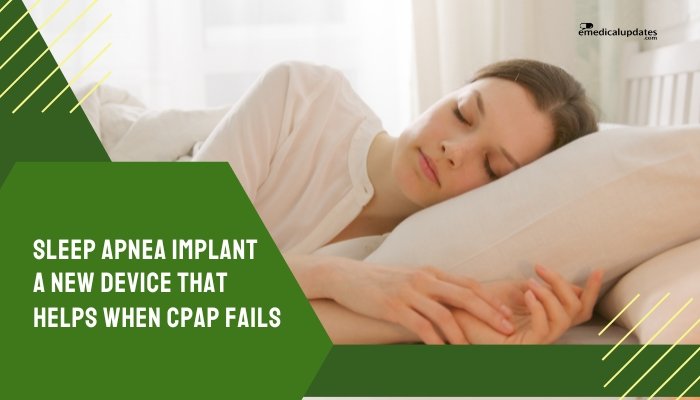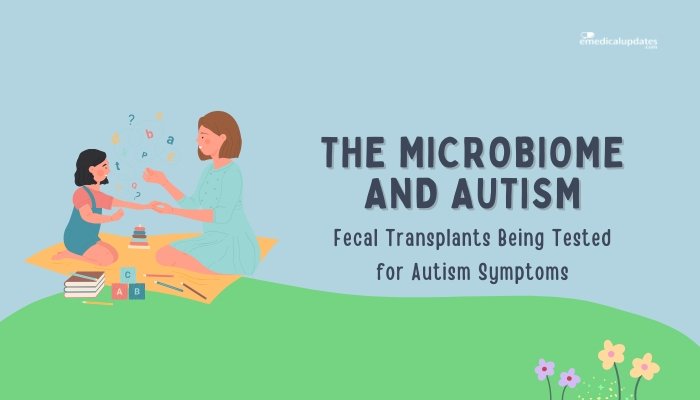Introduction
Postpartum depression (PPD) is a significant mental health concern that affects many new mothers. Although the arrival of a baby usually brings excitement, a notable percentage of women experience persistent sadness, guilt, or difficulty bonding with their newborn.
These symptoms can disrupt daily activities, relationships, and overall quality of life. Historically, mental health professionals have used antidepressants, psychotherapy, and support strategies to address PPD. However, these options have often required weeks before symptom relief.
A recent development changes this reality for many new mothers: an oral medication, commonly referred to as the first “postpartum depression pill,” has received approval by the U.S. Food and Drug Administration (FDA).
This medication, known as zuranolone (brand name Zurzuvae), offers a novel approach by targeting PPD in a more immediate and direct way than many standard antidepressants. Early trial data suggest that this treatment can reduce symptoms in a shorter timeframe, providing new mothers faster support during a vulnerable period.
This article provides an in-depth look at zuranolone’s mechanism, potential benefits, possible side effects, and broader implications for postpartum depression treatment.
Topics include understanding postpartum depression, how this new medication works, comparisons with other therapies, practical considerations for new mothers, and references to support the information provided. By examining this newly approved option, readers can gain insights into an emerging tool in perinatal mental health care.
Understanding Postpartum Depression
Defining Postpartum Depression
Postpartum depression is a mood disorder that generally begins after childbirth, although it can sometimes appear in the late stages of pregnancy or up to a year after delivery. It features persistent sadness, exhaustion, irritability, low energy, and difficulties experiencing joy in day-to-day life. These feelings can hinder self-care and affect a mother’s ability to nurture her child.
This condition goes beyond temporary “baby blues,” which usually resolve within days or a couple of weeks. PPD’s symptoms often intensify over time and can become more severe if not addressed. Women with postpartum depression may feel guilty about not relishing motherhood as expected, and this guilt can heighten the depression they experience. Professional help, including therapy, medication, or both, typically offers a path toward relief.
Prevalence and Risk Factors
Studies indicate that up to 15% of new mothers develop postpartum depression. Various factors can raise the likelihood of PPD, such as:
- History of depression or anxiety
- Traumatic birth experience
- Inadequate social support
- Hormonal fluctuations
- Low economic resources
- High stress or sleep deprivation
Certain individuals may encounter PPD without any specific risk factor, while others with multiple risk factors might be unaffected. The complexity of postpartum depression underscores the need for tailored care, watchful assessments, and early intervention.
Impact on Maternal and Infant Well-Being
The consequences of postpartum depression can extend to both mother and baby:
- Mother’s Health: Untreated PPD can disrupt sleep, appetite, and personal relationships. It can worsen over time, leading to chronic depression or anxiety.
- Child Development: Infants rely on parental interaction for healthy development. If mothers struggle with bonding or feel too overwhelmed to respond consistently, children might face delays in emotional or behavioral growth.
- Family Dynamics: Partners and household members also experience the effects of postpartum depression. Strain can arise, and existing responsibilities may feel unmanageable.
Given these wide-reaching implications, the need for more timely and effective PPD solutions is vital. Identifying and managing postpartum depression promptly can improve outcomes for both mother and child.
Traditional Approaches to Postpartum Depression Treatment
Psychotherapy and Support
Historically, professional therapy—such as cognitive-behavioral therapy (CBT) or interpersonal therapy (IPT)—has offered a primary mode of addressing postpartum depression. These approaches focus on:
- Identifying negative thought patterns
- Improving coping skills
- Reframing relationship dynamics
Support groups, whether online or in-person, also provide a communal setting for sharing experiences and lessons. Talking openly with other mothers can help those affected see that their experiences are neither isolated nor permanent.
Conventional Antidepressants
Selective serotonin reuptake inhibitors (SSRIs), serotonin-norepinephrine reuptake inhibitors (SNRIs), and other classic antidepressants remain standard options for postpartum depression. While these medications work well for many, they often take weeks to deliver noticeable benefits. This waiting period can be burdensome for new mothers in urgent need of help to manage daily tasks and child care.
Additionally, some mothers question the impact of these medications on breastfeeding. Although research shows that many antidepressants can be compatible with breastfeeding, concerns about side effects can lead to anxiety or non-compliance. Physicians usually balance the benefits of symptom relief against the potential risks in each case.
Intravenous Brexanolone
In 2019, the FDA approved an intravenous drug called brexanolone (brand name Zulresso) for postpartum depression. This marked a shift toward focusing on the hormones that drop after childbirth. Brexanolone closely resembles allopregnanolone, a metabolite of progesterone known for its positive effect on mood regulation.
Despite promising results, brexanolone’s infusion method requires several days of hospital or specialized clinic monitoring. This logistical challenge limits the drug’s reach. Many mothers find it difficult to leave their infants or arrange for extended hospital stays.
The New Oral Medication: Zuranolone (Zurzuvae)
What Is Zuranolone?
Zuranolone, marketed under the name Zurzuvae, is an oral pill for postpartum depression. It works similarly to brexanolone by interacting with gamma-aminobutyric acid (GABA) receptors in the brain, helping stabilize mood. The key difference is that zuranolone can be taken by mouth at home, reducing the need for lengthy infusions in a clinical setting.
The FDA approval of zuranolone in 2023 highlights the growing focus on postpartum mental health. Researchers aimed to create a therapy that new mothers could integrate seamlessly into their routine while caring for a newborn. The medication’s design addresses a core issue in postpartum depression: sudden hormonal shifts can alter the central nervous system’s capacity to manage stress. By boosting inhibitory signaling in the brain, zuranolone might relieve many of the distressing symptoms of PPD within a shorter timeframe than typical SSRIs.
Mechanism of Action
Zuranolone works through modulating GABA-A receptors, essential for balancing excitatory and inhibitory brain signals. GABA is the primary inhibitory neurotransmitter; when it binds to receptors, it diminishes nervous system overstimulation. Hormone fluctuations in the postpartum stage can disrupt these inhibitory mechanisms, contributing to depressive symptoms. By enhancing GABA’s inhibitory function, zuranolone may help restore calm and stability to a stressed or dysregulated neural network.
In simpler terms, think of GABA as the body’s internal brake pedal for stress responses. Zuranolone augments that brake pedal’s efficiency, potentially reducing the intensity of negative moods, anxiety, and other postpartum depression signs.
Administration and Dosage
Zuranolone is a short-course therapy, taken daily for 14 days. After this period, healthcare providers re-evaluate the mother’s mood and overall mental status. This short treatment window distinguishes zuranolone from other antidepressants that often require indefinite use or tapering.
The dosage typically remains consistent throughout the two weeks. Physicians might advise patients to take the pill with a meal to improve absorption and reduce the likelihood of stomach discomfort. Safety data suggest that the two-week schedule can offer meaningful relief without imposing a heavy burden on daily routines.
Clinical Trials and Efficacy
Study Design
Researchers tested zuranolone in randomized, placebo-controlled clinical trials. Participants were mothers diagnosed with severe postpartum depression within a certain timeframe after delivery. The trials assessed mood changes using established psychiatric scales, such as the Hamilton Depression Rating Scale (HAM-D) or the Edinburgh Postnatal Depression Scale (EPDS). By comparing the drug group’s improvement with the placebo group’s improvement, scientists could gauge whether zuranolone delivered a robust effect.
To confirm safety and effectiveness, the clinical program included multiple studies. Some trials administered zuranolone alone, while others combined it with supportive measures. Results were consistent: most participants who received the drug had more pronounced symptom relief than those on placebo. Notably, improvements often emerged within a few days, aligning well with mothers’ need for rapid relief of PPD symptoms.
Results at Two Weeks and Beyond
By the study’s two-week endpoint, mothers taking zuranolone showed significant drops in depression scores. Many also reported enhanced daily function, an improved relationship with their infant, and better sleep patterns. Some participants required no further treatment after the initial 14-day course, while others continued with standard mental health support or had additional rounds of medication after consultation with their physician.
Longer follow-up data remain somewhat limited, but early indicators suggest sustained benefits for many women. This pattern holds important implications for postpartum mental health because it suggests that short-term intervention might set women on a path to more stable well-being, especially when combined with ongoing psychological or social support.
Comparison with Placebo
In clinical trials, postpartum depression symptom reduction was significantly greater in the zuranolone group than in the placebo group. The difference in improvement was both statistically and clinically meaningful, signifying not just a minor shift in mood but a reduction in key symptoms like sadness, guilt, and difficulty caring for the newborn. This robust separation from placebo results helped justify the FDA’s approval and fueled anticipation that zuranolone might transform PPD treatment protocols.
Side Effects and Safety Profile
Common Side Effects
Zuranolone can produce side effects, though many participants tolerate it well. Some frequently noted issues include:
- Drowsiness or fatigue
- Dizziness
- Headache
- Nausea
- Sleep disturbances
Patients often find these symptoms mild and temporary, particularly as their bodies acclimate to the medication. Healthcare teams usually instruct women on managing side effects at home or adjusting the timing of doses (for example, taking the pill before bedtime to minimize daytime drowsiness).
Potential Concerns
Because zuranolone modulates brain pathways, experts watch for rare but serious adverse effects. Concerns include:
- Excessive sedation: Although drowsiness may be manageable, severe sedation can interfere with daily responsibilities.
- Impacts on motor coordination: Mothers may need guidance to avoid activities requiring high alertness until they understand how zuranolone affects them.
- Possible drug interactions: Women should inform providers about all medications or supplements to reduce the risk of interactions.
Healthcare professionals also assess whether a patient has any underlying conditions, like seizures or severe liver problems. Special care might be needed in these scenarios.
Breastfeeding Considerations
Mothers often wonder if they can breastfeed while taking zuranolone. Clinical data remain somewhat limited, but initial findings indicate that low levels of the medication may pass into breastmilk. The benefits of continued breastfeeding must be balanced against any theoretical risks of medication exposure for the infant. Healthcare providers generally evaluate each case individually, factoring in the mother’s mental health, the infant’s status, and available alternatives.
Comparing Postpartum Depression Treatments
Below is a simplified table illustrating some key differences among major postpartum depression treatments:
| Treatment | Route | Onset of Relief | Duration of Treatment | Advantages | Potential Drawbacks |
| Brexanolone | IV Infusion | Within days | 60-hour continuous infusion | Rapid effect, specifically for PPD | Requires inpatient setting, high cost |
| Zuranolone | Oral Pill | Within days | Two-week course | Convenient, shorter regimen, FDA-approved | Side effects (drowsiness), less long-term data |
| SSRI (e.g., sertraline) | Oral Pill | 4–6 weeks to see benefit | Varies (months to indefinite) | Widespread availability, well-known profile | Delayed onset, potential side effects (GI, sexual) |
| SNRI (e.g., duloxetine) | Oral Pill | 4–6 weeks to see benefit | Varies (months to indefinite) | Good for comorbid anxiety or pain | Delayed onset, possible side effects (nausea, fatigue) |
| Psychotherapy | In-person/Online | Gradual improvement | Weeks to months, can be ongoing | No medication side effects, addresses root causes | May require multiple sessions, time commitment |
| Support Groups | Community/Online | Varies | Ongoing as needed | Emotional validation, shared experiences | Effectiveness depends on group quality and resources |
This table underscores that different approaches often cater to varying needs. Zuranolone stands out for its short duration of use and rapid action, while SSRIs and SNRIs are more common and less expensive but require more time to show benefits. Psychotherapy remains an important, non-pharmacological tool that can supplement medication.
Potential Benefits for New Moms
Faster Relief from Depression Symptoms
Zuranolone’s accelerated effect is one of its most significant potential benefits. Many mothers managing postpartum tasks require quick recovery of energy, stable mood, and better sleep. Waiting several weeks for conventional antidepressants may feel overwhelming during a period where newborn care is highly demanding. By offering improvements within days, zuranolone fills a vital gap in perinatal mental health services.
Possible Reduction in Hospitalizations
Because postpartum depression can escalate quickly without treatment, some mothers experience crises leading to hospitalization. Effective and rapid therapies could reduce these severe episodes by preventing early-stage depression from deepening. Furthermore, a short and efficient medication schedule might lighten the burden on healthcare systems, freeing up resources for those who require more intensive interventions.
Enhanced Bonding and Daily Function
When postpartum depression lifts, mothers often describe better emotional connections with their babies. They may feel more engaged in infant care and better able to appreciate small moments of joy. The quick onset of zuranolone can restore confidence and vitality, letting new mothers participate more fully in family life, which can yield lasting positive effects on child development.
Limitations and Ongoing Questions
Cost and Insurance Coverage
While intravenous brexanolone can be expensive due to inpatient administration, zuranolone’s cost remains to be fully established in routine practice. Some insurance plans may cover it, but coverage criteria, copays, and prior authorization rules vary. Given that PPD disproportionately affects women with lower income or limited insurance, ensuring equitable access to zuranolone remains an important discussion for policymakers.
Durability of Response
Although clinical studies have shown strong short-term improvement, there is less clarity about whether a single two-week course can sustain mental health over the long run. Some women might need additional support or medication after the initial treatment. Determining when and how to repeat therapy, if needed, will require further research.
Safety in Broader Populations
Clinical trials have specific inclusion criteria. Data about women with coexisting mental health disorders, multiple postpartum complications, or limited family support may be less comprehensive. More extensive real-world observation will clarify whether zuranolone is equally safe and effective for diverse groups.
Practical Guidance for New Mothers
Talking to a Healthcare Provider
Mothers who suspect they have postpartum depression should reach out to a healthcare professional promptly. Warning signs can include low mood most of the day, pervasive feelings of worthlessness, unexpected bursts of sadness, trouble sleeping (beyond normal infant-related disruptions), or persistent thoughts of self-harm. A qualified clinician can confirm the diagnosis, discuss treatment options, and evaluate whether zuranolone fits the situation.
Combining Medication with Psychosocial Support
Even if medication relieves severe symptoms, psychosocial elements often remain central to long-term mental health. A counselor or therapist can help mothers navigate self-esteem issues or relationship strains that contribute to or worsen PPD. Family members, friends, or postpartum doulas might offer childcare assistance, household help, or emotional companionship, easing new mothers’ anxieties and stress.
Monitoring for Relapse
Postpartum depression can relapse, especially during stressful events. After completing a two-week course of zuranolone, mothers should maintain open communication with their healthcare providers. If mood disturbances reappear, timely interventions—whether medication-based or otherwise—can prevent severe recurrences.
Lifestyle Recommendations
While medical treatments remain crucial, simple lifestyle measures can complement therapies like zuranolone and further enhance well-being:
- Regular Sleep: Adequate rest is often elusive with a newborn, yet creating a structured sleep schedule or sharing nighttime duties can reduce stress.
- Nutritious Diet: Consuming balanced meals helps stabilize energy levels and mood. Whole grains, fruits, and vegetables supply essential nutrients and promote physical health.
- Physical Activity: Gentle exercise, like strolling with the baby or engaging in postpartum yoga, promotes endorphin release and boosts mood.
- Social Connection: Staying connected to supportive friends or family can lessen isolation. Virtual meetups or local mom groups can offer shared experiences.
- Mindful Breaks: Short moments of calm—breathing exercises, journaling, or listening to soothing music—can provide emotional resets.
These steps do not replace professional care, but they can help new mothers stay more resilient during a transitional period.
Future Directions and Research
Expanding Treatment Access
Experts predict that post-approval monitoring of zuranolone will yield data on safety and accessibility. Health authorities and advocacy groups may push for broader insurance coverage. Additionally, telehealth services might simplify postpartum depression screening, ensuring that mothers living far from specialized clinics can still be evaluated for eligibility.
Next-Generation Medications
Zuranolone’s approval signals renewed attention toward GABA-modulating therapies in mood disorders. Researchers are exploring other compounds to address anxiety, bipolar depression, or stress-related conditions in postpartum women. Lessons from zuranolone’s rapid action might inspire additional fast-onset antidepressants.
Personalized Medicine
Long-term, postpartum depression treatments might become more personalized. Genetics, hormone levels, and individual metabolic profiles could guide therapy decisions. Some women might respond better to SSRIs, while others might thrive on short courses of GABA modulators like zuranolone. Ongoing research on precision medicine aims to refine these approaches and deliver targeted results.
Conclusion
The FDA’s approval of the first postpartum depression pill, zuranolone, marks a meaningful advance in perinatal mental health. With its capacity to deliver rapid symptom relief in a short, two-week schedule, this oral therapy addresses a significant gap in postpartum care. Mothers grappling with PPD often need quick, sustainable support to maintain their well-being and remain present for their newborn.
Though clinical evidence spotlights zuranolone’s potential advantages—faster mood stabilization, reduced risk of severe depression—it also raises practical and financial considerations. Insurance coverage, long-term effects, and real-world data collection remain evolving questions. By combining medication with social support, therapy, and healthy lifestyles, new mothers can find a holistic approach to postpartum mood management.
For now, the successful trials and strong endorsement from the FDA offer hope that future postpartum depression treatments will keep improving. Zuranolone demonstrates how targeted, shorter-duration therapies might transform care and help mothers transition from surviving to thriving during one of life’s most significant milestones.
References
-
Gavin NI, Gaynes BN, Lohr KN, Meltzer-Brody S, Gartlehner G, Swinson T. Perinatal depression: a systematic review of prevalence and incidence. Obstet Gynecol. 2005;106(5 Pt 1):1071-1083.
-
Stewart DE, Vigod SN. Postpartum depression: pathophysiology, treatment, and emerging therapeutics. Annu Rev Med. 2019;70:183-196.
-
Meltzer-Brody S, Colquhoun H, Riesenberg R, et al. Brexanolone infusion in postpartum depression: two multicentre, double-blind, randomized, placebo-controlled, phase 3 trials. Lancet. 2018;392(10152):1058-1070.
-
Kanes SJ, Colquhoun H, Doherty J, et al. Open-label trial of brexanolone in postpartum depression. Br J Psychiatry. 2017;208(2):121-128.
-
Deligiannidis KM, Lasser R, Shrestha S, et al. Zuranolone for postpartum depression: double-blind, placebo-controlled trials. Am J Psychiatry. 2023;180(9):695-704.
-
Gunduz-Bruce H, Silber C, Kaul I, et al. Trial of zuranolone for postpartum depression. JAMA Psychiatry. 2023;80(8):781-790.
-
Forray A, Foster D. Substance use in the perinatal period. Curr Psychiatry Rep. 2015;17(11):91-98.
-
O’Hara MW, McCabe JE. Postpartum depression: current status and future directions. Annu Rev Clin Psychol. 2013;9:379-407.
-
Pearlstein T, Howard M, Salisbury A, Zlotnick C. Postpartum depression. Am J Obstet Gynecol. 2009;200(4):357-364.
-
Kim JJ, La Porte LM, Saleh MP, et al. The impact of breast-feeding on postpartum depression and postpartum psychosis: a literature review. Curr Opin Psychiatry. 2017;30(4):306-321.
-
Howard LM, Piot P, Stein A. No health without perinatal mental health. Lancet. 2014;384(9956):1723-1724.
-
Network TIoMHW. The maternal mental health crisis: bridging service gaps in postpartum care. J Womens Health (Larchmt). 2021;30(6):735-739.


